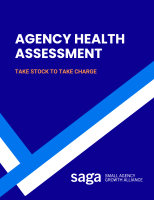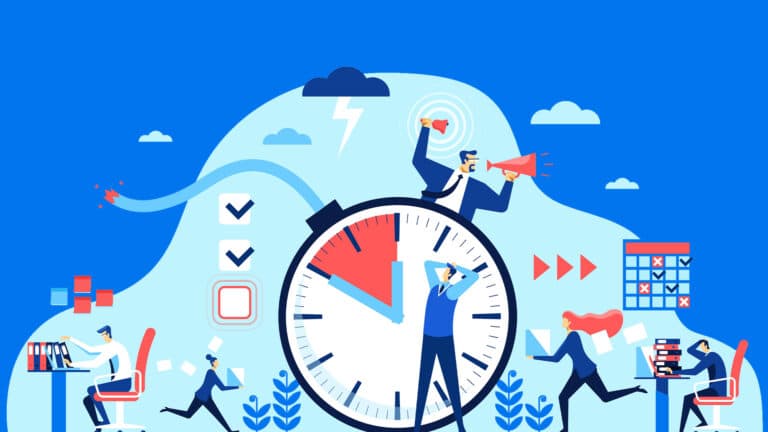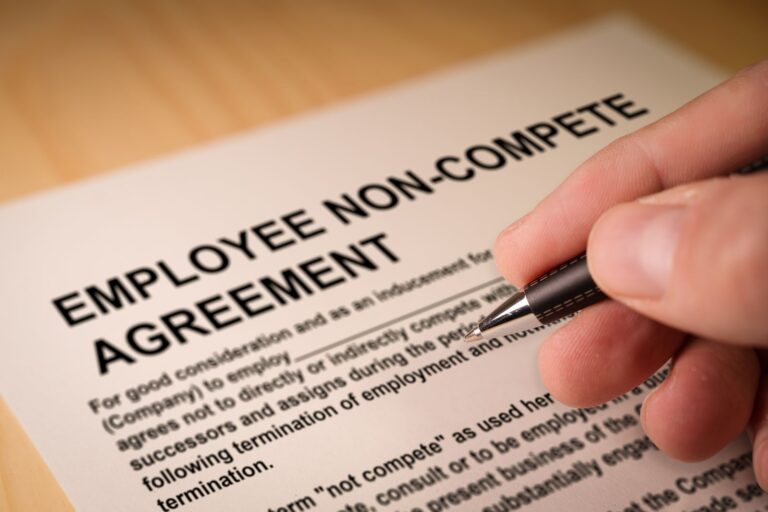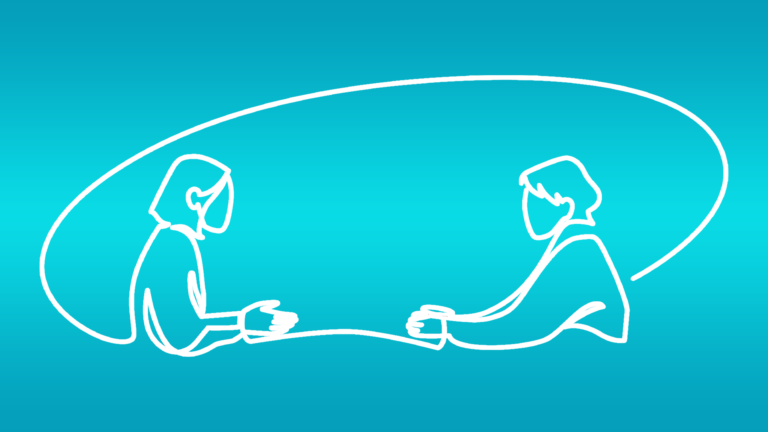Most of us spend a good chunk of time each week meeting with clients. So do our team members.
Over the years, I have seen all sorts of different approaches to note-taking in these meetings – and I have experimented with many different ones myself.
In recent years, I have settled on what I find to be the most effective way to ensure that I am maximizing the time I spend being present and participating in the meeting while also keeping enough of a record that I can help refresh my recollection in the future.
The main goal of meetings
We need to remind ourselves about why we are meeting with our clients in the first place. That’s why the focus should be on interacting with the client to the maximum extent possible, with meeting notes serving a secondary purpose.
We’re not court stenographers, and we don’t need a complete record of the conversation. We need enough information to ensure that we are accurately tracking action items and follow-up topics, but not so much that we have our head down transcribing what is taking place rather than being present (and demonstrating that presence to the client).
If all we are doing is conveying information in a one-way manner, we don’t need a meeting. We could simply exchange emails and call it a day. So focusing on what is being said and engaging with the other participants should never be sacrificed in favor of more detailed or accurate notes.
Why even bother with notes?
Effective note-taking helps to ensure that important items don’t fall through the cracks. That might be keeping track of individual responsibilities for action after the meeting concludes or identifying issues for follow-up conversations in future meetings.
Good notes can also serve as a useful refresher when you review them before the next meeting. It will keep the past conversation fresh in your mind and help provide you with the information you need to hit the ground running in each client conversation.
These meeting notes can also help when you need to brief someone who wasn’t at a meeting, as well as to keep track of what commitments were made in case they ever become a topic of dispute.
Electronic vs paper notes
In a world where most of us do all of our work electronically, I still take notes on paper. It’s not because I enjoy my penmanship so much that I want to practice it regularly – in fact, I often struggle to read my own handwriting.
The reason I stick to paper – and encourage you to consider that approach, too – is that constant pecking at your keyboard can be distracting to other participants and often creates the impression for others that you may not be paying full attention.
Even if you have a nearly silent keyboard that eliminates the constant click-clack (that honestly i enjoy from my own keyboard), you will need to devote real estate on your screen to your note-taking app that may make it more difficult for you to visually engage with other attendees when doing a video meeting.
After the meeting, you may want to convert your handwritten notes to electronic form or you can scan them into your computer if you wish to maintain an electronic version without having to retype them.
What to include in your meeting notes
I have created a one-page meeting notes form that I use for all of my client meetings. It helps to keep me organized and allows me to review key items at a glance without having to parse free-form text.
Here’s what I have on my form:
- Basic meeting info. I list the purpose of the meeting, date, and participants at the top of the page so that I can easily identify what the notes relate to.
- Agenda. Good meetings have an agenda. Whether it is distributed in advance or agreed at the start of the conversation, I list the items we want to cover to help ensure we stay on track.
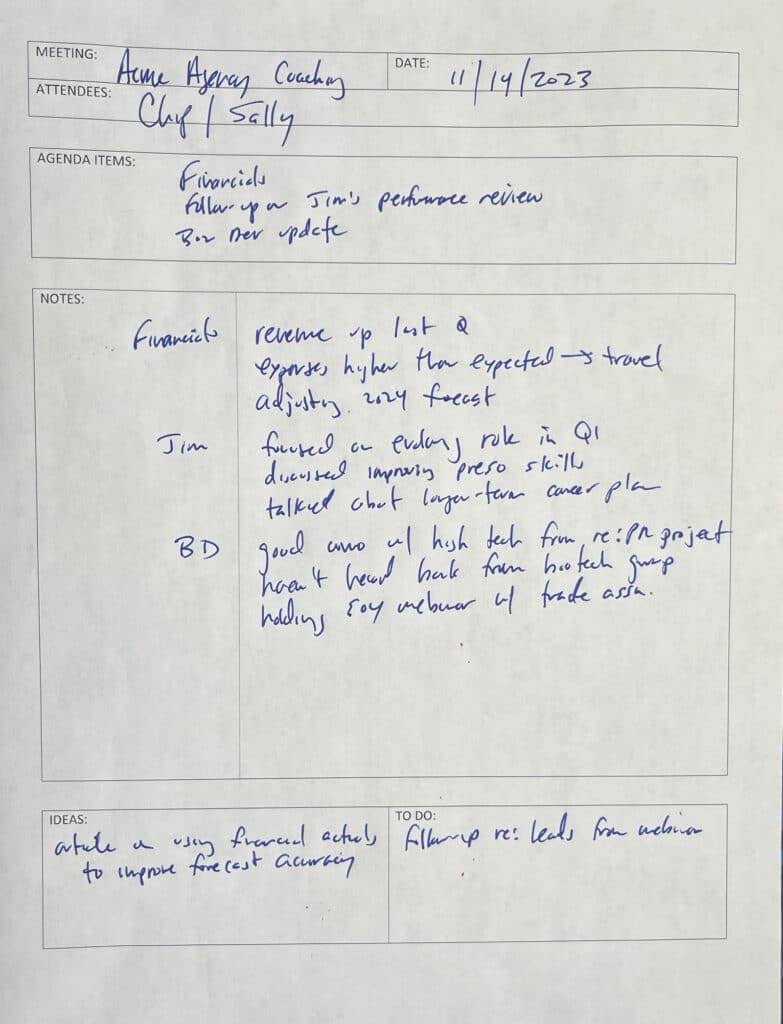
- The notes themselves. Of course, most of the page is devoted to the actual meeting notes. I have this divided into two columns so that I can use the left to call out the major topics (that generally correspond with agenda items) and then details for each to the right. This enables me to see the main topics at a glance and zero in on the details that relate to each.
- To-do list. Action items and topics for follow-up get their own box so that they can be added throughout the meeting and easily get referenced in the future. Usually I will transfer these to my project management tool after the meeting and I always consult it before my next meeting with the client.
- Ideas. A box that I added in recent years allows me to record ideas that come up during the course of the meeting. This might be topics for articles or podcast episodes, business development concepts, or even thoughts on new service offerings. It’s a great way of maximizing the total value of the conversation beyond the day-to-day tactical needs that you’re fulfilling.
Not just useful for client meetings
While this approach focuses on client meetings, the same general format and structure can work well for team 1:1 meetings, business development conversations, and even partner meetings.
If you find that there are some adjustments you want to make for your own style, feel free to do so. The format that I use has been based on what I have experienced myself and observed others doing over the course of the past 30+ years of sitting in meetings and on calls.
The key thing is to recognize what you are trying to accomplish with your meeting notes and ensure that the act of recording the meeting doesn’t get in the way of participating fully in the discussion.
If you want to use the same form I use and described here, you can download my meeting notes template (PDF) for yourself.



